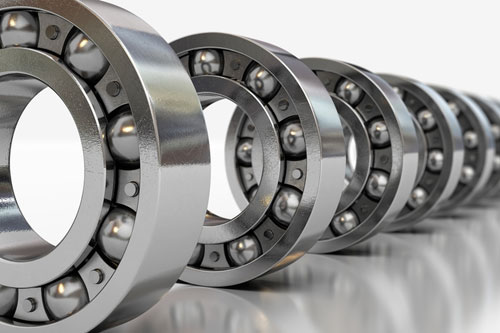What Are Ball Bearings Made Of
What are ball bearings made of? You probably have heard of steel, ceramic steel, and aluminum ball bearings, but do you know what other materials are used for ball bearings? Read on to find out! Ball bearings are widely used for a variety of purposes, from lubrication to power transmission and more. If you have questions, check out the FAQs below. Also, be sure to visit our FAQ page for tips and tricks on choosing ball bearings.
Ceramic materials are used in ball bearings
The advantages of ceramics in ball bearings are vast. They are extremely hard and corrosion-resistant, and they also exhibit a low coefficient of friction. Because they have a higher density than steel balls, ceramics also generate less heat at high speeds. In addition, they can withstand a wide variety of temperatures. Because of these properties, they are used in many applications, including machines that require high speed and high precision.

Ceramic steel ball bearings
Steel ball bearings are manufactured from best-quality chrome alloy electric furnace steel. They are then hardened to the required service life and dimensional accuracy. Advanced heat-treating processes add high strength and anti-cracking properties. A controlled processing method makes the steel balls highly resistant to contact fatigue. This allows them to withstand a range of working temperatures from -40 to 150 Deg C. They are often made of ceramic or silicon nitride, but not all types.
Aluminum
Often used in automotive applications, aluminum ball bearings have an advantage over steel balls: they are lighter and easier to machine. The aluminum material is a great choice for press fit operations, as the ductility of aluminum allows most deformation to occur inside the ball. Precision aluminum balls also lend themselves well to automated machinery. Aluminum balls are not too hard, so they can be press fit into undersized holes. Hardness must not exceed 35 HRC.
Sensor-bearing units
When installing a sensor-bearing unit, it is necessary to handle it with care. When installing the unit, you must press the mounting sleeve into the seating surface. Pressing in force should be applied only to the mounting sleeve; not the sensor unit itself. Heating the bearing is an option for the mounting process. However, the temperature of the electric hot plate must not exceed 80 degC.
Angular contact ball bearings
Angular contact ball bearings have two opposing surfaces on which the balls make contact with each other. These designs are ideal for applications where high speeds and accuracy are required. The ball-bearings' combined axial and radial capacities also make them ideal for high-speed rotating applications. In addition, angular contact ball bearings are often used in pairs. They are asymmetric, which is primarily due to manufacturing reasons.
Self-aligning ball bearings
The benefits of self-aligning ball bearings are numerous. They offer high-speed performance while producing less heat and friction. This means they run cooler, require less maintenance, and are suitable for a variety of applications. Additionally, they perform well under light loads, producing low noise due to their loose conformity. These advantages make them an excellent choice for many different applications, including household items, such as lawn mowers, rakes, and other small-scale machinery.
Single-row ball bearings
Single-row ball bearings are flexible and have many applications. They can be pre-lubricated with grease or have steel shields, and they may have rubber seals or snap rings on the outside edge. Single-row ball bearings have several different types of retainers, including tapered bores, which are available upon request. They are often the best choice for small spaces. For example, the 6200 series is ideally suited for dental hand tools, optical encoders, and electrical motors.
Double-row ball bearings
Double-row ball bearings are designed to accommodate high radial and axial loads. These types of bearings are an excellent alternative to single-row ball bearings because they have the same outside diameter but a wider outer ring. The large bore and deep radial raceways of double-row ball bearings also make them suitable for applications where axial load capacity is crucial. However, double-row ball bearings do not have the same range of load capacities as single-row bearings.













